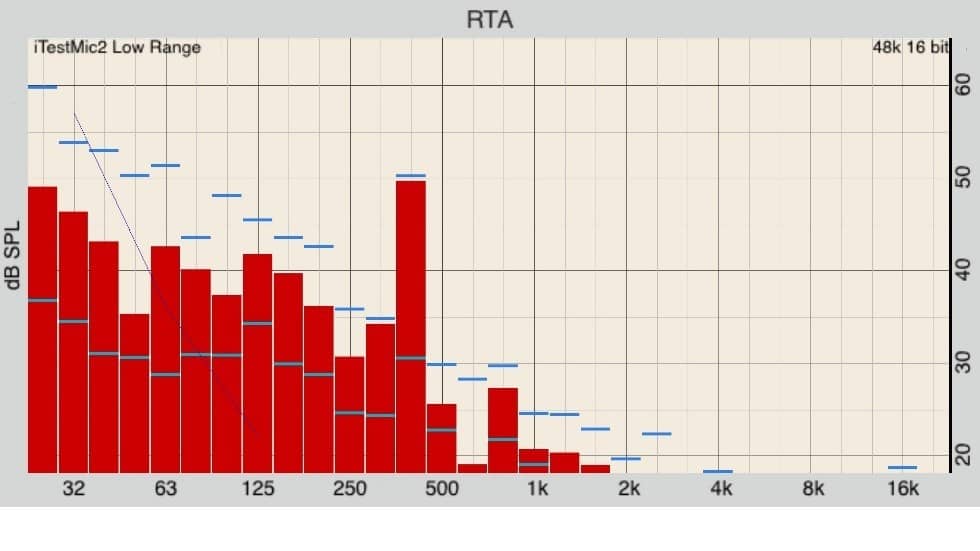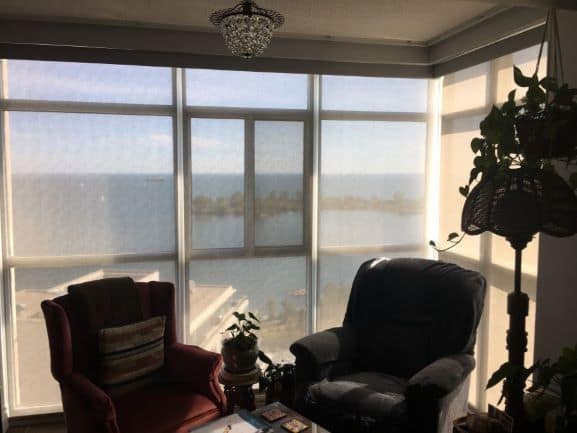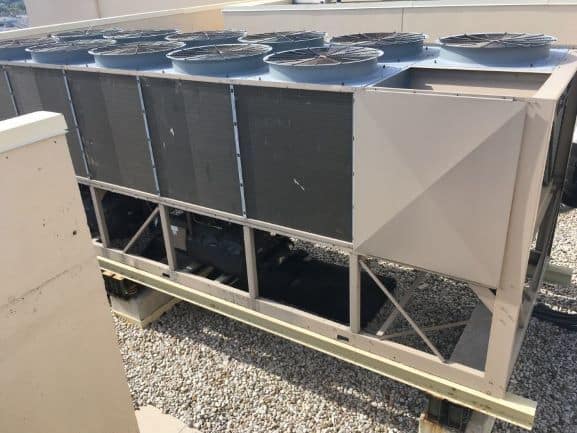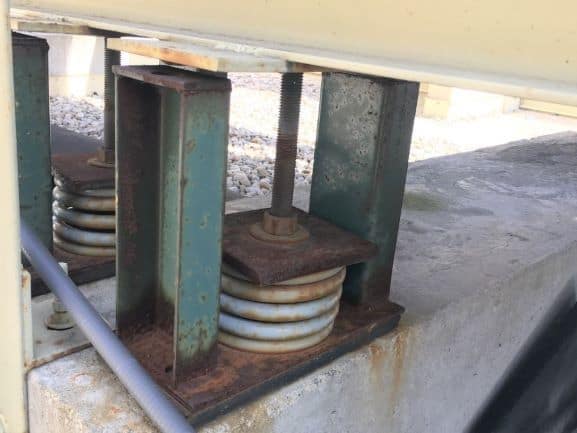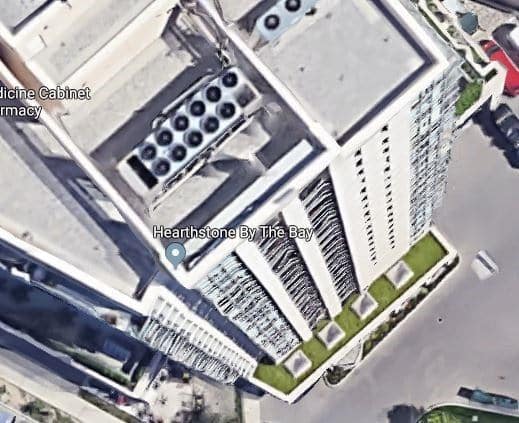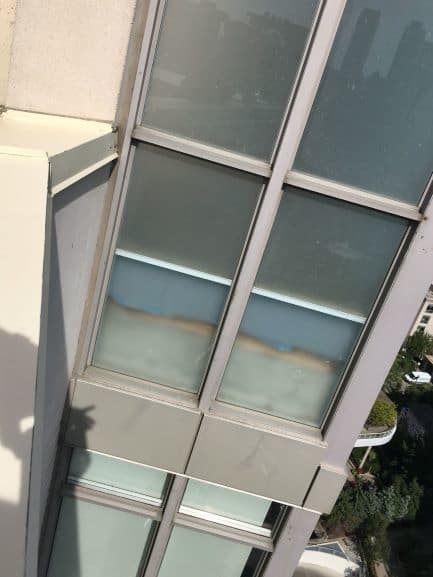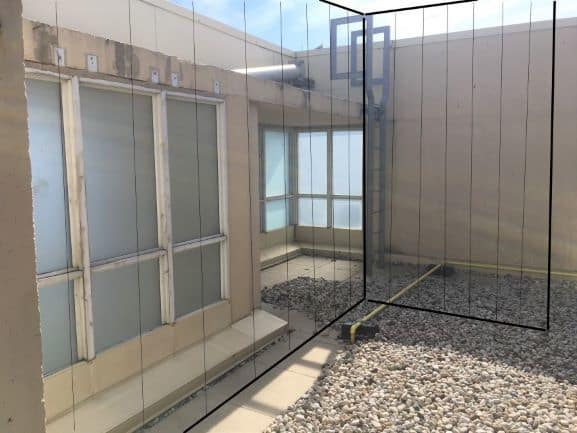A client, a condominium board, asked me to assess an intractable mechanical noise level in a condominium apartment that is located below a roof-mounted chiller.
More...
Roof-top unit equipment
Roof-top mechanical equipment is a common source of noise complaints in multi-unit residential buildings, particularly in condominium units directly below it. All mechanical equipment generates some level of vibration and noise. Effective vibration and noise control is typically approached by considering three elements: the source, the transmission path, and the receiver [reference 1]. By addressing each of these components, the impact of mechanical noise can be significantly reduced.
The only reliable way to interrupt the transmission path of mechanical noise is to isolate the equipment at its source. An appropriately designed vibration isolation system—such as spring isolators, neoprene pads, or an isolation curb—prevents equipment vibrations from entering the building structure. Once vibration energy is transmitted into structural elements, it becomes significantly more difficult and expensive to control.
Mechanical noise complaint
In this specific mechanical noise complaint situation, I have tested a noise level in the complainant’s condominium apartment. Screen capture of one of the tests is in Image 1 below. The noise level is 45 dBA with almost all of the energy in the 400 Hz frequency component.
Image 1 - 1/3 octave spectrum of a sound pressure level in condo apartment = 45 dBA
Noise in the condominium apartment (Image 2) is highly variable, changing frequently in both level and tonal content. The noise often exhibits a pronounced tonal component, with a distinct 400 Hz tone clearly audible.
Average of five tests taken in the apartment registered sound pressure level 42.9 dBA and at 400 Hz 48.0 dB (unweighted).
Image 2 - Condo apartment with curtain wall windows.
Ambient noise levels in the condominium apartment could not be measured with the roof-top chiller fully shut down, and some traffic noise was present during the test period. However, the ambient noise did not contain the 400 Hz tonal component observed in the measurement spectrum. Therefore, the level measured at 400 Hz can be considered accurate and not influenced by ambient noise.
Permitted levels of noise
There are no legislative standards in Ontario for ambient noise level or mechanical noise level in residential units. Toronto bylaw [2] rules against noise that is defined as “any unwanted sound” that is “clearly audible”. I think this applies to the apartment in question.
The maximum level of ambient noise, including mechanical noise, recommended by ASHRAE for apartments is 35 dBA [3].
Noise level near the roof-top unit
I have then tested the noise level near the roof-top unit chiller (Image 3). Screen capture of the test is in Image 4. The reading is 88.6 dBA with most of the energy in the 40 Hz frequency band, but noise is also present in higher frequencies. However, there is no 400 Hz peak as observed in the apartment.
Image 3 - Roof-top chiller
Image 4 - 1/3 octave spectrum of sound pressure level near roof-top chiller = 88.6 dBA
Noise next to the roof-top unit is very loud and fluctuates with changes in the chiller’s load.
Average of three tests on the roof, next to the chiller, is sound pressure level 85.2dBA, and at 400 Hz 86.7 dB
Noise reduction between the roof-top unit and complainant’s condo apartment
Noise level difference between the average of several readings on the roof and in the condominium apartment is overall 42.3 dB and at 400 Hz 38.7 dB.
The ceiling partition over the complainant’s condominium apartment is at least 12” thick concrete slab and has sound attenuation of at least STC 56 and attenuates at 400 Hz at least 53 dB [estimated from 4].
As shown in the above paragraph, the tested noise reduction is much less.
Recommended noise remediation for condominium board
Mounting of roof-top chiller
I observed several deficiencies in the mounting of the chiller. The unit is currently installed on vibration isolation supports, with an additional approximately ½-inch neoprene pad placed beneath each support. Two of the spring isolators (see Image 5) are overloaded and excessively compressed; these should be replaced with isolators of higher load capacity. This corrective action will reduce the transmission of vibration into the building structure. However, based on the measurements and observations to date, I do not consider this to be the primary source of the noise heard in the complainant’s apartment.
Image 5 - Over-compressed isolation supports
Airborne noise
Airborne noise from the rooftop chiller could, in principle, be transmitted to the condominium apartment through the ceiling structure or through the exterior wall and window assemblies. However, the roof structure itself likely provides sufficient airborne sound attenuation to limit this transmission path.
Based on the measurement data and physical observations, the dominant noise transmission path appears to be structural vibration of the curtain wall. The curtain wall system extends from the roof level adjacent to the chiller down the side of the building (see Images 6 and 7), effectively carrying vibration from the equipment location to the complainant’s apartment.
Image 6 - Satellite view of the building showing roof-top chiller and curtain wall
Sound transmission effect of curtain walls
There are many references in literature discussing vertical sound transmission through curtain walls, including an article in this blog. One reference [5] estimates that the vertical sound attenuation of curtain walls is 35 dB to 46 dB. The tested sound attenuation between the chiller and the complainant’s apartment is within this range. Another reference [6] demonstrates that curtain walls exhibit reduced noise transmission at frequencies 400 to 500 Hz. This phenomenon is also visible in the presented test results.
Image 7 - View of the side of the building from the rooftop
I therefore conclude that the dominant noise transmission path to the affected apartment is via structural vibration of the curtain wall system. To mitigate this transmission, I have recommended installing an acoustic barrier on the exterior wall near the rooftop chiller, as illustrated in Image 8. This barrier will reduce the direct acoustic excitation of the curtain wall.
In addition, I have recommended that the condominium board treat the wall surfaces facing the chiller with sound-absorbing materials. Installing absorptive panels on all surfaces directly exposed to the chiller will reduce reflected sound energy and further minimize the excitation of the curtain wall assembly.
Image 8 - Sketch of the acoustic noise barrier wall
References
[1] Robert Simmons, Vibration Isolation, ASHRAE Journal (American Society of Heating, Refrigeration and Air-Conditioning Engineers), August 2007.
[2] Toronto bylaw noise complaints
[3] ASHRAE recommended noise levels
[4] Master Handbook of Acoustics, Sixth Edition, by F. Everest and K. Pohlmann, McGrawHill 2015, page 338

